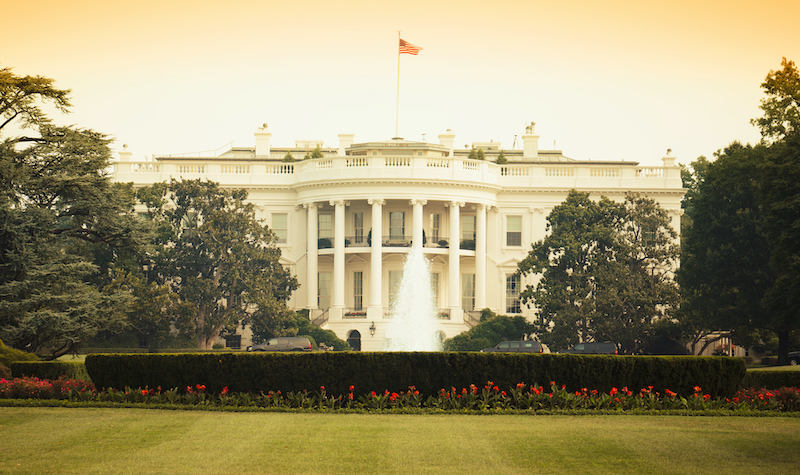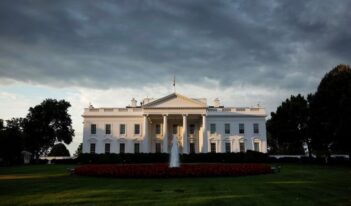
President Biden’s memo could transform the mission of regulatory review by expanding OIRA’s role.
President Joe Biden’s memorandum, “Modernizing Regulatory Review,” sets in motion a number of modifications to regulatory review.
The memorandum shifts the focus of regulatory review to public interest values and directs the Office of Management and Budget (OMB) to recommend ways to modernize regulatory review that promote these values. It also seeks to incorporate new developments and improvements to cost-benefit analysis into regulatory review.
These moves are substantial, but one possible change is unlike the rest and would make modernizing regulatory review even more significant than it might already seem.
President Biden strongly suggests that the Office of Information and Regulatory Affairs (OIRA), a predominantly reactive agency within OMB, should have responsibility to develop regulations that advance the Administration’s values. President Biden wants to flip the mission of OIRA.
Whether this change occurs depends on OMB. The memorandum asks OMB for “proposals that would ensure that regulatory review serves as a tool to promote affirmatively regulations that advance” the values set forth in the Biden memorandum. In addition, it instructs OMB to “consider ways that OIRA can play a more proactive role in partnering with agencies to explore, promote, and undertake regulatory initiatives that are likely to yield significant benefits.”
But the writing is on the wall as far as the role of OIRA is concerned. President Biden is pointing to an official role for OIRA in the affirmative promotion of regulations to address the United States’ pressing crises.
How does a formal change in OIRA’s role reflect a strategy for presidential control of major regulatory policy?
Looking at prior administrations, President Biden has choices for affirmatively promoting regulations. He could capitalize on the strategy of President Bill Clinton: issuing presidential directives. As then-Professor Elena Kagan documented in her path-breaking article, President Clinton popularized the practice of sending memoranda under his signature to particular agency heads, instructing them to consider a specific regulation consistent with his priorities. Presidential directives are different from executive orders because they specifically address regulations that apply to parties outside the government. President Clinton used them to “instigate” regulations, as if legislation bypassed requiring an agency to issue a regulation.
White House policy advisors—“notably those in the Domestic Policy and the National Economic Councils”—typically devised and prepared these directives. According to Kagan, “the staff, deputies, or heads of the agencies and White House policy councils typically resolved any disagreements” with and among executive branch agency officials that arose in discussions, “with the level of decision-making dependent on the matter’s importance; on very few occasions did disputes reach the President himself before one side deferred to another.”
Presidential directives had been around before the Clinton Administration, but President Clinton made more regular use of them. In contrast, President Ronald Reagan issued nine directives; President George H.W. Bush issued four; and President Clinton issued 107.
Presidential directives get high marks on the presidential control scale. As Kagan explains, they affirmatively promote regulatory policy in a manner that is targeted and concrete. For these reasons, she continues, they are a particularly effective tool of presidential control and are likely to produce regulations that track presidential preferences.
Kagan further argues that presidential directives increase political accountability on matters of social and economic significance. Transparent and signed by the President himself, presidential directives convey presidential “ownership” of regulatory policy. For this reason, President Clinton used presidential directives to great effect—although not all of the resulting regulations survived judicial review.
President Biden could also use this practice to achieve his goals—and he might. But he is also pushing in a different direction. Faced with a number of major, continuous, and complex national crises, President Biden is looking to OIRA to promote his goals. This approach is not entirely new.
During the George W. Bush Administration, John Graham, as OIRA administrator, used prompt letters to promote cost-effective agency rules. His letters, similar to presidential directives, went out to particular agency heads and instructed them to consider specific rules consistent with presidential priorities. They were targeted, concrete, and transparent. These letters were also effective for presidential control, albeit a weaker form of political accountability since they were signed by Graham and not the President.
Importantly, Graham’s prompt letters benefited from the resources that OIRA brings to bear for regulatory review, including access to information and dedicated, expert staff. Graham issued only 13 prompt letters in the span of a year and a half, and no more because he discovered that he could effectively spur regulations through meetings with agencies.
President Biden could use OIRA’s asserted prompt power to achieve his goals under the modified and expanded set of principles in his memorandum.
Arguably, President Barack Obama followed this approach. In his regulatory review executive order, President Obama articulated changes to cost-benefit analysis, instructing OIRA, for example, to consider in its analysis distributional consequences of regulation. These changes addressed critics’ concerns that OIRA produced flawed or skewed cost-benefit analysis, and that OIRA killed regulations more than promoted them. Cass Sunstein, who served as OIRA administrator under the Obama Administration, wrote an article after he left his position describing the progress that OIRA had made in implementing President Obama’s vision for regulatory review.
President Biden, however, aims to go further. And in some sense, he already has, simply by announcing a wider, bolder set of values to govern regulatory review, in addition to focusing attention on improving cost-benefit analysis. Moreover, President Biden has set the stage for a larger role for OIRA in promoting presidential priorities than it had before, by making “affirmative promotion” of his goals a fixture—rather than an option—of the regulatory review process, and an official responsibility for OIRA—not an assumed one.
When viewed in light of the alternatives, President Biden has good reason to favor a formal expansion of OIRA’s role, which has features that make it normatively desirable. This approach combines the best aspects of previous efforts to promote regulatory policy and minimizes the worst. The memorandum pre-commits to a set of values while handing OIRA the responsibility to advance those values. If OIRA is provided with adequate resources, President Biden’s approach promises a more systematic, continuous, pro-regulatory, and expertise-driven response to the United States’ crises than relying on sporadic presidential directives or prompt letters.
The memorandum conveys a sense of presidential “ownership” of this plan for addressing public needs, which enables the President to claim credit for meeting the moment. “Ownership” of this public interest-centered plan also facilitates political accountability, which makes the suggested approach normatively desirable as well as politically appealing.
Despite this ownership of the general regulatory plan, the President will not take “ownership” of actual regulations, which presents both a practical presidential control problem and a political accountability problem. OIRA could promote regulations that stray from presidential preferences, and the President could evade blame when OIRA supports regulations that impose harsh burdens.
But the President has familiar safeguards against the risk of policy drift, including the threat of removing the OIRA administrator. The involvement of other officials in both the White House and executive branch agencies also provide a check on OIRA’s choices. As for the accountability risk, the President is always free—with the possible exception of presidential directives—to blame an agency under his control for unpopular choices. To a large extent, modern regulatory government is grounded on an acceptance of this risk, and it is no worse for OIRA than elsewhere in the executive branch.
Flipping OIRA’s mission is ingenious when considering that it also might help facilitate a beneficial and lasting change in OIRA’s culture. OIRA has long had the reputation of housing career economists with outmoded training and an anti-regulatory orientation. This concern has potentially aged out or will age out on its own over time.
In any event, to apply the President’s values and to carry out a proactive role, OIRA must have career economists with modern training and dedication to account fully for the benefits and distributional consequences of regulation. OIRA also must have civil servants with other relevant expertise—including, by the terms of the memorandum, cutting-edge scientists, sociologists, and policy planners with expertise in public health, racial justice, and climate change. The inclusion of this expertise promises that other relevant considerations will set the tone and drive the regulatory process, rather than arise as an afterthought or impediment to efficient regulation.
But a formal change in OIRA’s role is not without downsides.
Once an institutional change comes to pass, it is difficult to undo. A formal increase in OIRA’s power to address major crises now makes that power available for future administrations with less sanguine motives, so the President should be careful what he wishes for. The proof is in the future.
Creating a modern role for OIRA goes beyond modernizing the principles that govern traditional regulatory review. Enlisting OIRA to help proactively address the United States’ problems would allow the President to capitalize on OIRA’s resources to follow through on his platform, promote political accountability in the regulatory review process, and intensify the need for OIRA to bring in the next generation of career staff.
Time will tell whether President Biden flips the mission of regulatory review. But enthusiasm and optimism are warranted if he succeeds.
This essay is part of a six-part series entitled Regulatory Review Reimagined.




